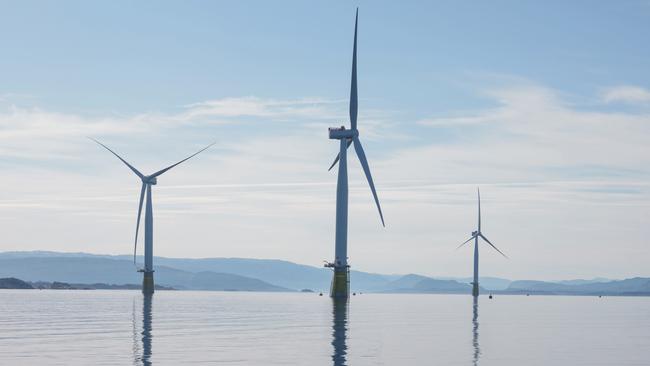Harnessing offshore wind power needs red tape cut

Yet we will be lucky to have the first turbine spinning before the end of this decade, unless government works with industry and communities to remove some of the regulatory obstacles and build the social licence for offshore wind farms.
The benefits of offshore wind are widely recognised. It will play an important role in helping diversify our energy mix, making our supply more resilient when we need it most – particularly during winter and in the evening peak.
We are fortunate to have a broad expanse of coastline suitable for wind power, with key areas such as Gippsland and the Hunter already plugged in to key energy infrastructure, possessing skilled workforces transitioning out of coal and gas, and close to industrial centres.
As more households ditch gas and electrify their lives, from the way they cook and heat to the way they drive, we need to augment and build out our electricity generation. Offshore wind power is not a new technology, but one which has improved considerably over the past three decades and is perfectly positioned to play an important role in our energy transition.
The capacity of offshore wind farms has increased dramatically since the first turbines were installed off the Danish coast in 1991. The latest generation of turbines can generate up to 15MW, with one turbine capable of producing enough electricity in a year to power approximately 20,000 households. Victoria is targeting at least 2GW of offshore generation capacity by 2032 – enough to power 1.5 million homes.
Recognising that this is a new area for Australia, and that we have a particular responsibility to ensure our unique marine species and habitats are protected, there are nevertheless a number of steps which the federal and state governments could take to simplify the process for sound offshore wind proposals.
The first is to ensure that we are not putting excessive hurdles in the way of project approval by duplicating processes among multiple agencies and departments.
A regulator which can act as a “one-stop shop” for both state and federal approvals would stop applications bouncing around between different levels of bureaucracy, streamlining the process while ensuring the necessary checks are made.
This is in line with the findings of the Samuel review of the EPBC Act, which recommended national environmental standards, together with a strong accreditation process, to achieve good environmental outcomes as well as streamlined development approval decisions.
For example, environmental impact assessments conducted before an area is declared for offshore wind should be reutilised when projects begin lining up for approval. Instead of repeating the assessment process, consider the work already done as a preapproval and fill in any other gaps early, lowering the risks and time lags to smooth the way and lower development cost for investors and developers who are already facing rising cost pressures.
In the context of offshore wind, the National Offshore Petroleum Safety and Environmental Management Authority (NOPSEMA) is well placed as the established regulator to take responsibility for the development process and support projects to move more efficiently from the drawing board to the generation stage.
Government also has an important role to play in helping build the social licence for offshore wind. The community wants to know more about offshore wind; we can start the engagement process now with education, particularly in the areas already declared for offshore wind projects.
Early engagement will help give certainty to communities and developers, filling out the knowledge about offshore wind, the opportunities and the impact. Government can act as an independent voice, while leaving such important community awareness solely to individual developers would likely frustrate communities and lead to further delay.
Government can also encourage worthy projects by acting as an intermediary to underpin long-term contracts. A model similar to the Long-Term Energy Service Agreements (LTESAs) in NSW’s Renewable Energy Zones would help secure finance for project construction by providing minimum revenue certainty while retaining flexibility to secure revenue contracts in the open market.
It is inevitable that offshore wind will play a key part in meeting our future energy needs. The question is how committed we are to make the journey and whether we can act quickly enough to make a “just transition” that supports workers and communities moving out of fossil fuel generation into renewables.
This is not about cutting corners, but ensuring Australia has a rigorous and smarter pathway for projects. Thinking ahead and acting now to establish a better framework for offshore wind will ease our energy transition.
Aylin Cunsolo is a partner with Baker McKenzie’s energy and resources team, and Ben Cerini is an energy market specialist with Cornwall Insight Australia.



The federal government’s announcement of the Hunter coastline as the newest approved area for offshore wind generation takes Australia a step closer to realising the enormous potential of this renewable energy source.